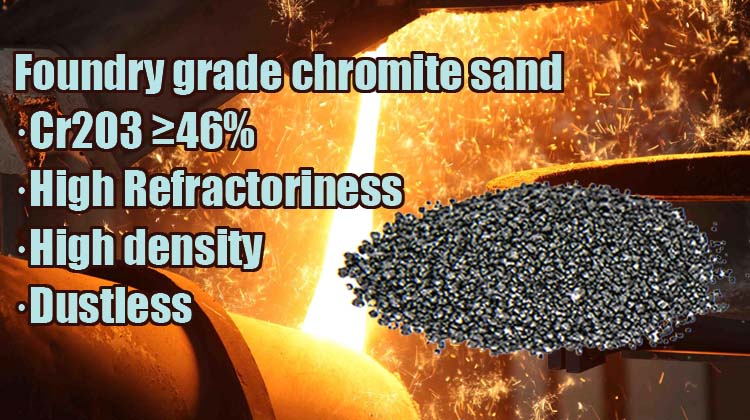Why Choose Chromite Sand for Casting?
Chromite sand (chromite ore sand) is often used as molding sand for large thick wall steel castings. It has the characteristics of high sintering temperature and strong resistance to liquid steel penetration. It is applicable to Iron chromium oxide sand, which can avoid most of the mechanical and chemical sand sticking. Thus it can make castings obtain smooth and clean surface quality. Chromite sand is very popular in heavy steel foundry fields. However, in some cases with acid-hardening furan resin or water glass process of stainless steel casting, chromite ore will also have the “glaze” sand sticking defect. The use of South African chromite sand with excellent quality can effectively reduce this defect.
Research shows that the enamel-bonded sand produced on the surface of thick and large steel castings is often due to the decomposition of FeO from chromite ore at high temperatures, which reacts chemically with the Cr element in the molten steel (for high chromium steel castings) or the resin carbonization film on the surface of the face sand. This oxidation-reduction reaction reduces iron oxide in chromite sand to form molten iron. The molten iron is mixed with chrome ore particles to form a dense cermet mixture after cooling and adhering to the surface of the casting, resulting in the “glaze” sand sticking defect. Therefore, the iron content in the chrome sand must be controlled to prevent this situation.
In the generation process of chromite ore, it is particularly important to wash and magnetic separate the raw chromite ore sand of South Africa. The water-washing process can remove SiO2 yellow skin, sediment, and impurities from the raw sand. The magnetic separation process can remove excess iron, magnetism, and silicon, and control FeO content within 26.5%, SiO2 content within 1%, and turbidity within 0.2%.

